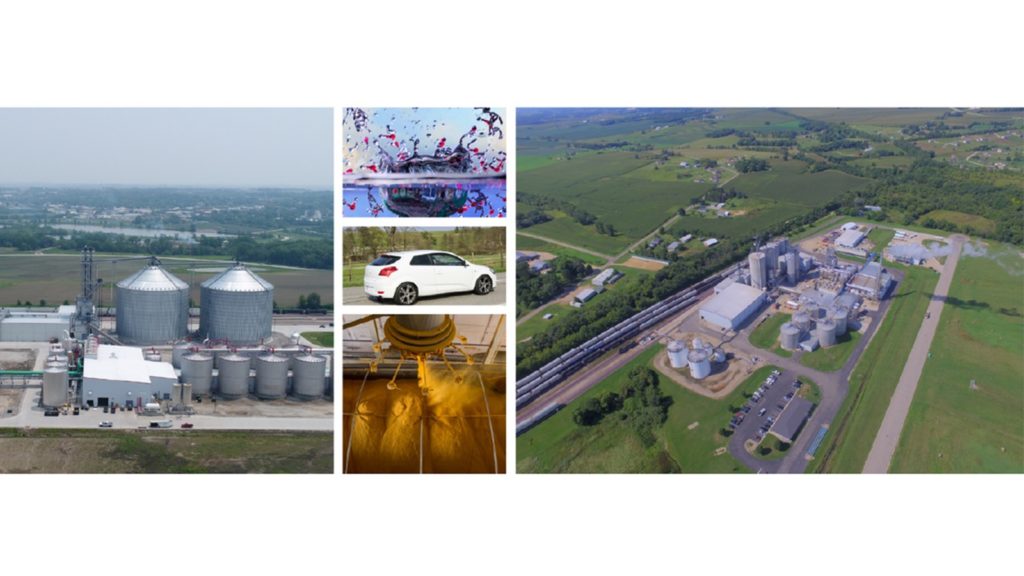The findings were derived from a recent survey of commercial-scale dry-mill facilities spread throughout the country, including facilities producing fuels from both starch and cellulosic materials.
The comprehensive survey was the first of its kind of biofuel producers in the United States. It covered a range of topics, including plant capacity, feedstock, production volume, water usage and wastewater management — as well as fuel and electricity consumption.
Funded by DOE, Office of Energy Efficiency and Renewable Energy, Bioenergy Technologies Office, it showed that the biofuel industry has made marked efforts to conserve resources, diversify product portfolio, recycle and reuse water and improve productivity.
For example, according to survey responses, the amount of fresh water used in biofuel production decreased by 12 percent since 2011 and by 54 percent in the nearly two decades after 1998.
The survey also revealed that water and wastewater management is progressing toward zero liquid discharge (ZLD) through treatment processes designed to remove all the liquid waste from a system. Forty-two percent of facilities surveyed achieved ZLD by increasing plant water reuse and recycling.
Survey results showed that biofuel plants diversified their water sources by using alternatives such as power-plant cooling water and municipal reclaimed water, in addition to well water and city water.
“This study made the industry’s water footprint, water conservation, and recycle/reuse a major focal point,” said May Wu, principal environmental systems analyst at Argonne. “As the industry continues to grow and develop, it must constantly seek out new ways to boost efficiency while also prioritizing conservation. Our findings show that major biofuel producers are doing just that, which is great not only for productivity but for the planet as well.”
The survey also found that five percent of plants have implemented on-site electricity generation to replace grid electricity, and several have become net electricity exporters.
New methods and new facilities have brought about positive change, the survey found.
The move toward co-processing corn kernel fiber with grain to produce ethanol brought about a 2.5% increase in yield: In 2017, 2.88 gallons of denatured ethanol were produced from the starch and fiber of a bushel of grain, as compared to 2.81 gallons produced from starch alone.
The biofuel industry is key to the nation’s bioeconomy — an emerging part of the U.S. economy that relies on renewable biological resources to produce fuels, power, and bio-based products.
Sustainability remains a key goal in the Bioeconomy Initiative announced by multiple federal agencies to accelerate innovative technologies that harness the nation’s biomass resources for affordable biofuels, bioproducts, and biopower.
The research was supported by DOE’s Office of Energy Efficiency and Renewable Energy, Bioenergy Technologies Office.
The Office of Energy Efficiency and Renewable Energy supports early-stage research and development of energy efficiency and renewable energy technologies to strengthen U.S. economic growth, energy security, and environmental quality.
Argonne National Laboratory seeks solutions to pressing national problems in science and technology. The nation’s first national laboratory, Argonne conducts leading-edge basic and applied scientific research in virtually every scientific discipline. Argonne researchers work closely with researchers from hundreds of companies, universities, and federal, state and municipal agencies to help them solve their specific problems, advance America’s scientific leadership and prepare the nation for a better future. With employees from more than 60 nations, Argonne is managed by UChicago Argonne, LLC for the U.S. Department of Energy’s Office of Science.
The U.S. Department of Energy’s Office of Science is the single largest supporter of basic research in the physical sciences in the United States and is working to address some of the most pressing challenges of our time. For more information, visit https://energy.gov/science.
Original post https://alertarticles.info


